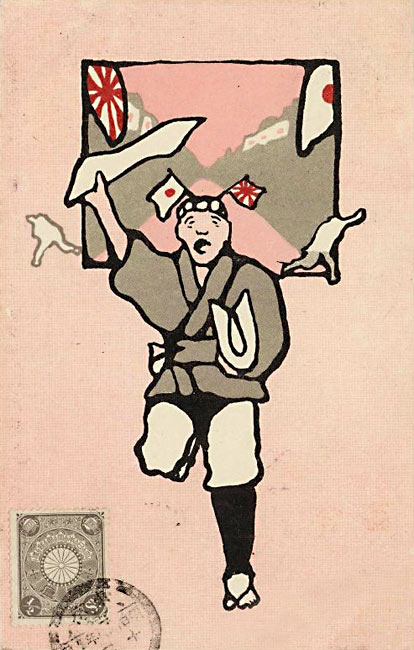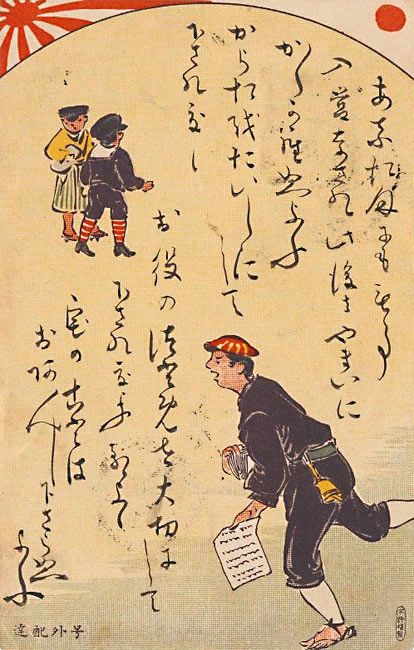The Homefront: Spreading the News
In a most “modern” manner indeed, many Japanese picture postcards were self-referential. That is, “spreading the news” about the glorious war became itself a subject of war coverage. Many postcards almost crackled with energy in depicting how newspapers competed in reporting the latest news from the front—with vendors literally butting heads in one example.
These “spreading the news” graphics are also illuminating in their depiction of the mixture of different classes who consumed the news with equal absorption—ranging from people in traditional clothing to the most fashionable Western-style dandies. As usual, the presence of English captions on some postcards reflects the global audience that the Japanese were trying to impress.
These particular images also employ a typical nationalistic design motif in the form of two flags: the national “rising sun” flag of red circle on white background, and the red-and-white sun with rays that served as the military ensign. The adoption of such flags was itself a sign of Japan’s new identity as a modern nation state, and the coloration was deeply resonant: white was the traditional symbol of purity, and red (the color of blood) signified sincerity.
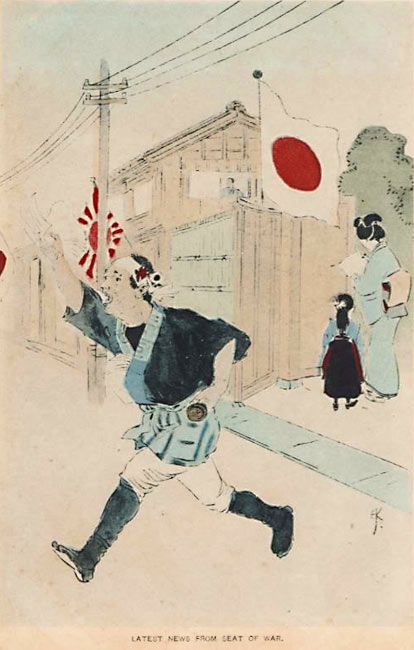
“Latest News From Seat of War”
[2002.2406]
“Extra of Victory (96)” (from an unidentified series)
[2002.5267]
“Newspaper Man Rushing in the Latest”
[2002.1580]
“Newsboy Selling Extras”
(with hand-written message)
[2002.3335]
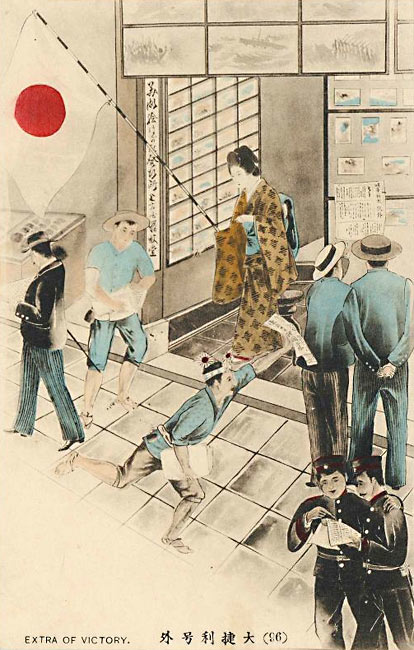
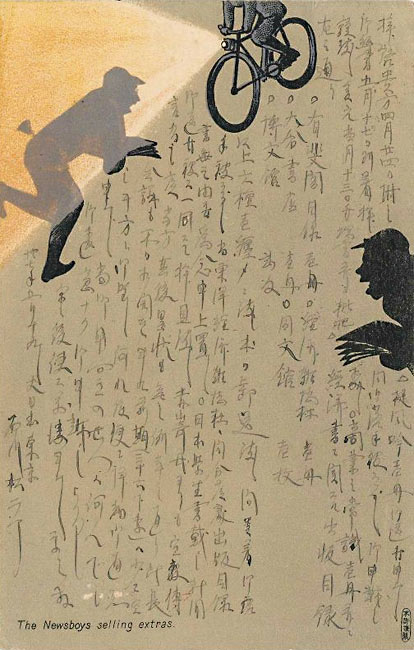
“The Newsboys Selling Extras”
(with hand-written message)
[2002.5245]
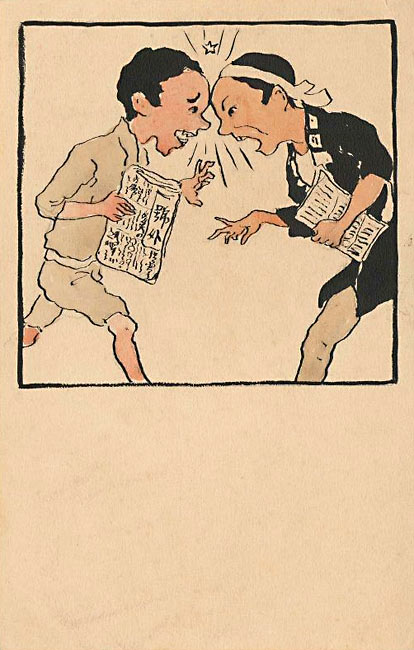
“Newboys in Fight”
[2002.5242]
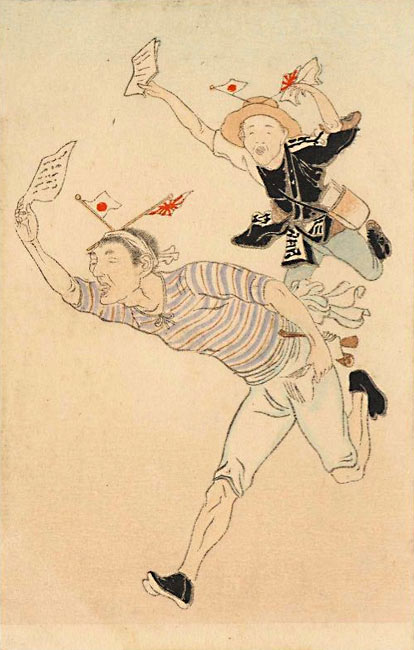
“Newsboys Rushing with the Latest News”
[2002.5241]
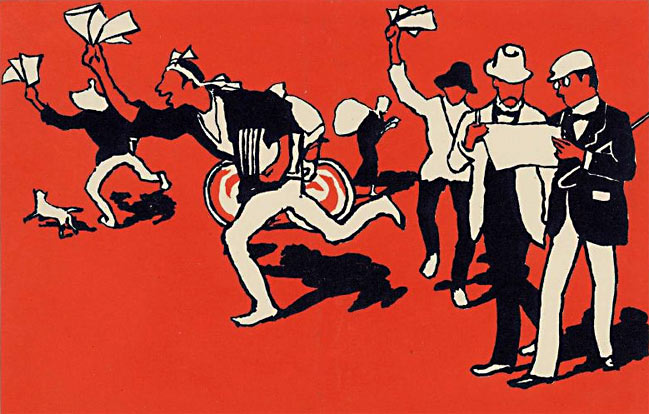
“News Runners Rushing in with the Latest”
[2002.1581]
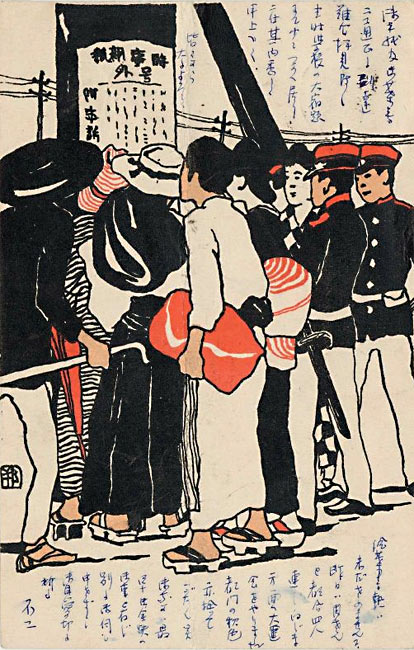
“Crowds Gathering to Read the News” (from an unidentified series)
by Hashimoto Kunisuke (with hand-written message)
[2002.926]
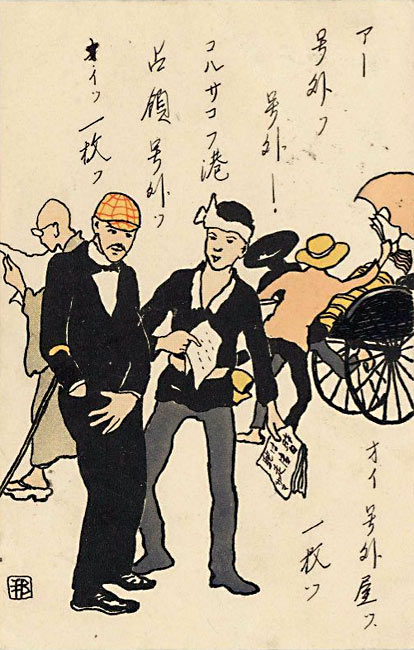
“Newsboy Selling Paper” (from an unidentified series)
by Hashimoto Kunisuke (with hand-written message)
[2002.927]


